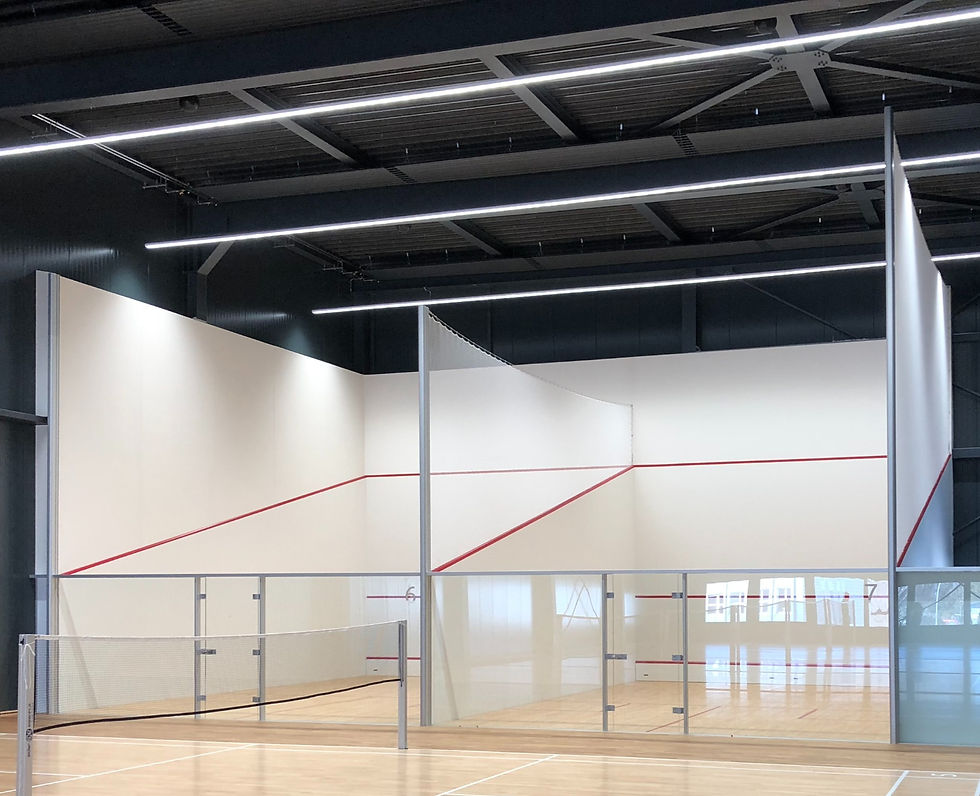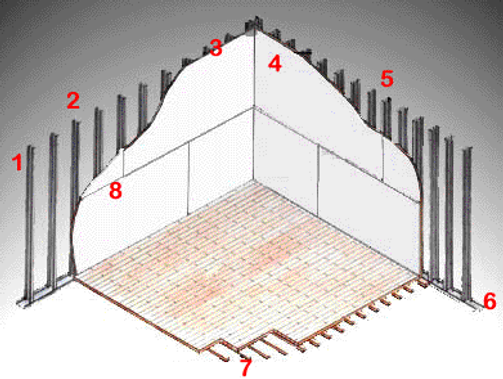What Are the Key Factors to Consider When Buying Squash Court Walls?

Jethro Binns, CEO & Founder of SquashSkills and Co-CEO of LevelTech, recently highlighted a significant issue on LinkedIn:
"90% of first-time squash players never come back. Let that sink in... Squash needs to offer the same ease for newcomers. Proper guidance is key to retaining them."
This statistic underscores a critical challenge in the squash community: retaining new players. At SFN, we believe that making squash more accessible and enjoyable for beginners starts with the very courts they play on. The type of squash court can significantly influence a newcomer's experience, affecting everything from ball bounce to overall gameplay.
The Importance of Court Types for Beginners
Squash courts aren't one-size-fits-all. Different court types offer varying playing characteristics, which can either aid or hinder a beginner's development. Understanding these differences is essential for players, coaches, and facility managers aiming to create a welcoming environment for newcomers.
Beginners who do not return after their first try don't necessarily blame the courts. Due to their lack of experience, they aren't aware that different wall types could offer a much better playing experience. Various analyses clearly demonstrate the connection between the playing characteristics of the court and usage rates, especially for beginners and masters. In the masters age groups, cushioning is the essential factor—a topic we'll delve into in a future post.
Ultimately, the choice of wall types is by far the most underestimated factor with a tremendous impact on the profitability of the entire facility.
In the coming months, SFN will launch a series of posts exploring the various aspects of squash court design. We'll begin by focusing on solid walls for indoor squash courts, delving into how they impact play and what to consider when selecting them.
Different Types of Solid Walls for Indoor Squash Courts
An overview of the different types, along with their significant differences in playing characteristics and performance, can be found on our website here.
Key Factors to Consider When Choosing Squash Court Walls
To help you navigate the myriad options, we've compiled a checklist of the most important points to consider when selecting squash court walls:
1. Playing Characteristics / Ball Bounce
The most crucial aspect regarding playing characteristics is the ball bounce. It's important to note that the ball can reach speeds of up to 200 km/h (124 mph). The fastest squash ball speed recorded is 281.6 km/h (175 mph), achieved by former world-ranked player Cameron Pilley. Depending on the stiffness of the squash wall, individual wall sections may deflect upon impact, significantly influencing the ball's rebound behavior during play.
Walls made of glass panels exhibit the greatest deflection. When a ball traveling at 200 km/h strikes these walls, they can deflect up to 15 mm. Ashraf Hanafi, a renowned figure in the world of squash, has detailed the implications of this in an interview.
Summary:
For beginners, optimal rebound behavior is essential. The best ball rebound is achieved when the wall remains stable and does not flex. Therefore, court walls should be as stiff and solid as possible to ensure consistent rebound behavior.
2. Acoustic Properties
Due to the nature of squash, games generate significant noise levels. This noise can become unpleasantly amplified with wall types that have cavities between the playing wall and the building wall. These cavities act as resonators, leading to an uncomfortable noise level within the squash court.
While noise levels don't directly impact gameplay, they can negatively influence beginners' impressions and overall enjoyment.
Summary:
Opting for wall constructions that minimize resonant cavities can reduce excessive noise, creating a more comfortable and inviting environment for newcomers.
3. Warranty
Playing squash is comparable to someone constantly hitting the wall with a rubber hammer. This places high demands on the quality and durability of the courts.
Considering that squash courts are typically a long-term investment with a return on investment (ROI) between 5 and 10 years, the warranty period provided by the wall manufacturer should be at least 10 years.
Summary:
Ensure the manufacturer offers a minimum 10-year warranty to protect your investment and guarantee long-term performance.
4. Maintenance
Squash balls are made of rubber. When the ball hits the wall, it leaves abrasion marks. The amount and extent of this abrasion differ among various wall types and ball colours. All walls will accumulate ball marks that need to be removed periodically for aesthetic reasons. One option is to scrub the walls with a special cleaning agent, but it's not easy to completely remove the marks.
Some wall types offer a quicker alternative to cleaning: repainting. While cleaning often requires scaffolding, certain walls can be repainted without sanding off the old paint first. This can be done within two hours without scaffolding, using just a telescopic rod and a paint roller.
Summary:
Choose wall surfaces that allow for easy and cost-effective maintenance, such as quick repainting, to minimize downtime and upkeep expenses.
5. Cost Efficiency
The number of specialized companies for constructing squash courts is limited. Currently, these companies are mainly located in the USA, Europe, India, and China. This means that for many locations, court elements have to be imported, often incurring additional costs due to import duties and high transport expenses.
For cost efficiency, consider whether individual components can be sourced locally. Often, local materials haven't been used in squash before but meet the technical requirements. A thorough evaluation of locally available materials can help save significant costs.
For example, court lighting should definitely be sourced locally. As long as an LED light fixture has protection to prevent damage from squash balls, it's suitable for use in squash courts.
Summary:
To maximize cost efficiency, consider sourcing court components and materials locally to avoid additional expenses from import duties and high transportation costs. Local materials that meet technical requirements can significantly reduce overall expenses without compromising quality.
6. Safety Standards
Squash is a high-intensity sport with a slight risk of injury.
To ensure that injuries do not originate from the courts themselves, it's crucial to comply with international standard norms used in both the construction and sports sectors.
The most important technical standards for glass walls in sports facilities focus on safety and performance requirements to ensure both the safety of users and the structural integrity of the buildings. Additionally, adhering to local regulations regarding handicap access is essential.
Summary:
Ensure that your squash courts comply with all relevant safety standards and accessibility regulations to provide a safe environment for all players.
Making Informed Decisions
Investing in squash courts is substantial in both cost and impact, and their importance is often underestimated. SFN suggests visiting various facilities and testing the courts firsthand.
If you have further questions on this topic, please write to team@squashfacilities.net — we are happy to answer your questions.





Jethro, thanks for the comprehensive article, which most interesting. In my experience, for the absolute beginner having the right coach is paramount, and where the goal of that coach is to "make the new player want to come back and play again" there's a good chance that the player will want to get back on court. Making lesson 1 fun, energetic and helping the pupil show improvement is pretty much a guaranty that the new player will be hooked, and ready to come back for lesson 2.....thanks for all you're doing. All the best Alistair Barnes